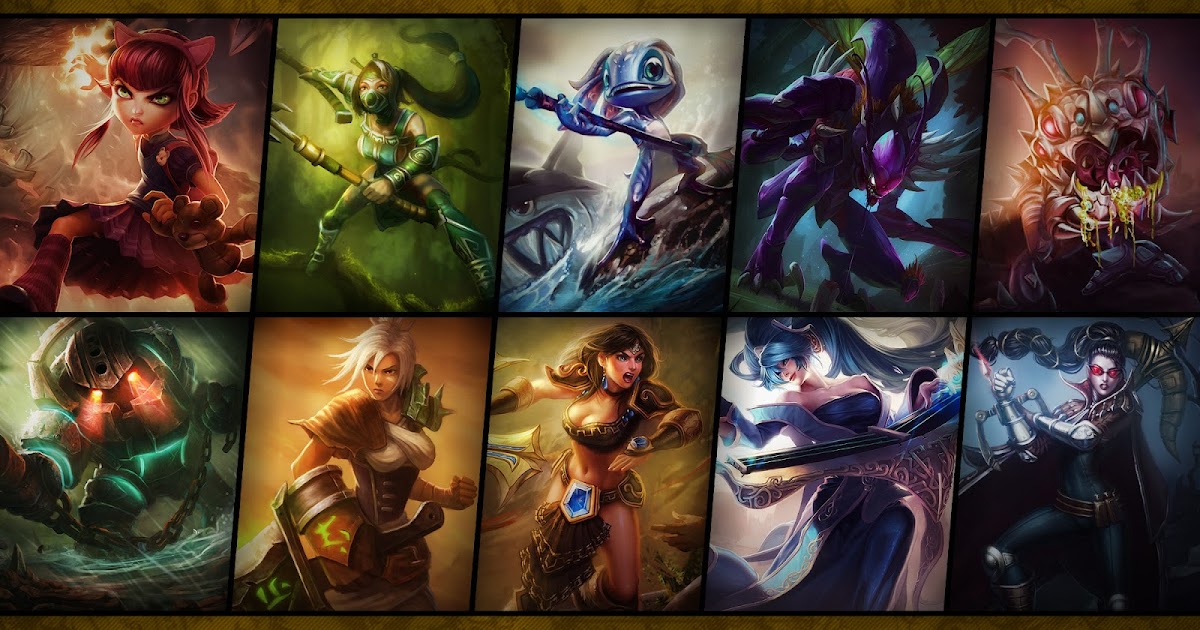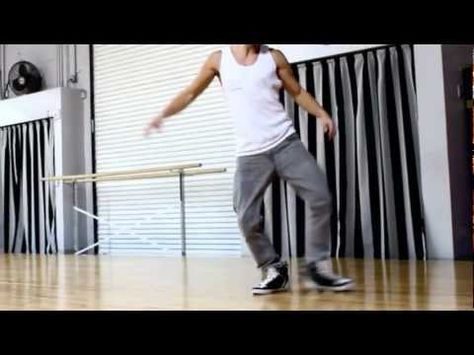How many types of salsa dance are there
The Different Styles of Salsa Dancing
If you’re new to salsa dancing, you may not be aware that there are actually a few different types of salsa dancing that are danced around the world.
The music that they are danced to is usually the same (although there are a few exceptions) but that the styles are different enough that if you only know one style of salsa, you may have trouble dancing with someone dancing another style.
This can get pretty confusing, so we’ve put together this guide to teach you about the different styles of salsa dancing that are out there. By the end of the article you’ll learn what the different styles of salsa look like, maybe discover some new styles, and find the style of salsa that’s right for you!
How many types of salsa dance are there
There are 6 different styles of salsa danced around the world. Salsa dancing originated in New York, but has evolved into different forms in different countries. You can learn more about the different styles of salsa below.
The different styles of salsa dancing:
- New York Style Salsa (Salsa On 2)
- LA Style Salsa (Salsa On 1)
- Cuban Style Salsa (Salsa Cubana)
- Salsa Rueda (Rueda de Casino)
- Colombian Salsa (Salsa Caleña)
- Salsa Choke
New York Style Salsa (Salsa On 2)
Salsa music as we know it today originated in New York, and New York-style salsa is the style of salsa that originated there. New York-style salsa is sometimes called “linear salsa” or “linea” by dancers of other styles because it is danced in a line (or “in the slot”) similar to Hustle or West Coast Swing, from which it was influenced.
New York-style salsa is often referred to as “Salsa On 2” or “On2 Salsa” because the break step in New York style happens on the second beat of the music. On2 salsa was popularized by Eddie Torres, and on2 dancers argue that their style is more musical because it more closely aligns with the tumbao & clave, two common musical patterns found in salsa music.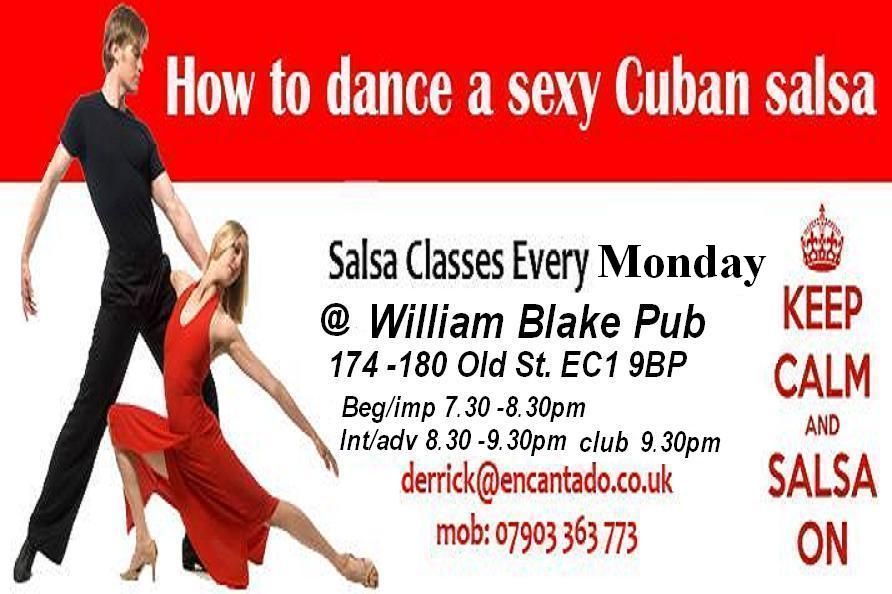
Salsa On2 has grown in popularity in recent years, and is a popular way of dancing for advanced dancers and at international dance festivals. Because of its similarity to LA Style Salsa, most On2 dancers can also dance On1, although they may prefer the former.
LA Style Salsa (Salsa On 1)
LA-style salsa is probably the most popular form of salsa dancing in the world. It is the style of salsa that is taught most broadly, and most dancers of other styles of salsa dancing will have at least some familiarity with it. If you want to learn the most broadly applicable form of salsa, LA-style salsa is a good choice.
LA-style salsa, like its name suggests, orginated in Los Angeles, California, and was popularized by the Vazquez brothers.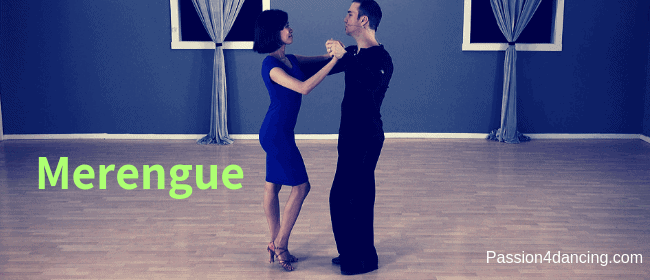 LA-style salsa is danced in a line, similar to New York style salsa, but dancers break on the first beat of the music (on 1) rather than on 2. Many newer dancers find this timing more intuitive.
LA-style salsa is danced in a line, similar to New York style salsa, but dancers break on the first beat of the music (on 1) rather than on 2. Many newer dancers find this timing more intuitive.
Cuban Style Salsa (Salsa Cubana)
Cuban-style salsa or Salsa Cubana is a type of salsa that originated in Cuba. Cuba-style salsa, unlike New York or LA-style, is danced in a circular motion similar to East Coast Swing, rather than in a line. The turn patterns in Cuban salsa typically are in a constant circular motion, with lots of hand tricks and movements.
Salsa Cubana is often danced to a genre of music known as “timba”, which is a form of salsa music that is popular in Cuba. Cuban dancers also often incorporate Afro movements into their dancing, although this is increasingly a popular trend in New York and LA-style salsa as well.
Cuban dancers also often incorporate Afro movements into their dancing, although this is increasingly a popular trend in New York and LA-style salsa as well.
Salsa Rueda (Rueda de Casino)
Salsa rueda, also known as Rueda de Casino is another type of salsa that originated in Cuba. “Rueda” in Spanish means “wheel”, and in salsa rueda a group of couples dance together in a giant circle, rather than as individuals.
In salsa rueda, there is one leader who calls out what move to do, and all the couples in the circle execute the move simultaneously. The moves are similar to those of Cuban-style salsa, and a salsa rueda dance involves a coordinated dance of synchronized movement, partner switches, and intricate turn patterns.
Colombian Salsa (Salsa Caleña)
Colombian salsa, also known as Salsa Caleña (named after Cali, Colombia, where the dance originated) is one of the rarest forms of salsa.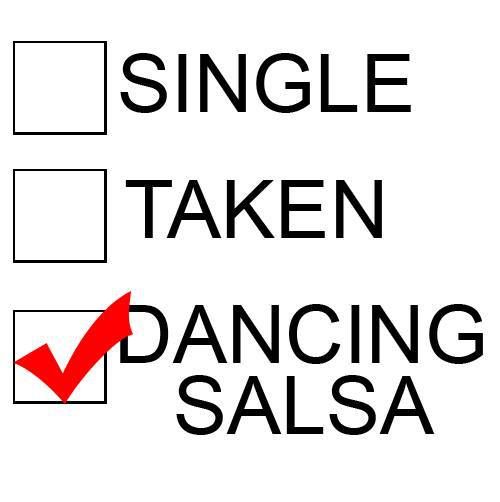 Outside of Colombia there are very few cities in the world where Colombian salsa is danced regularly.
Outside of Colombia there are very few cities in the world where Colombian salsa is danced regularly.
Inside Colombia, however, is another matter entirely. Cali, Colombia calls itself “La Capital Mundial de Salsa” or the “world capital of salsa”, and it has valid claims to that title. The city by some estimates has over 200 salsa academies, more than any other city in the world. Every year the city hosts a massive festival called the Feria de Cali, with thousands of dancers, and the city is host to a number of massive salsa dance competitions.
Salsa Caleña is similar to Cumbia, another dance which originated in Colombia, and like Cuban salsa is danced in a circle. Colombian salsa is characterized by extremely fast footwork and quick knee movements, as well as acrobatics and lifts at the performance and competition level.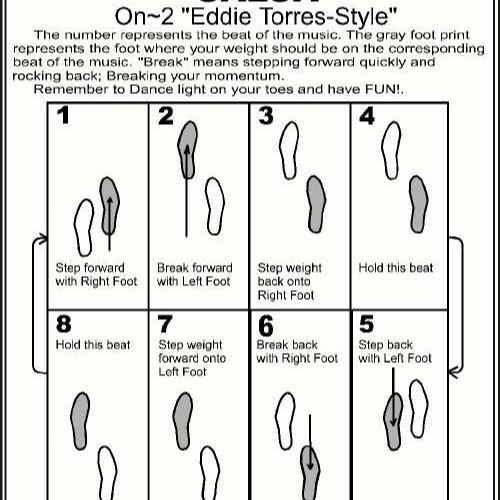
Salsa Choke
Salsa choke (pronounced “cho-que”) is another style of salsa that originates from Colombia. Unlike other styles of salsa, salsa choke is danced individually, but in a group, where one dancer leads a step and the others in the group follow.
Salsa choke is danced specifically to salsa choke music, which is a type of music that sounds a little like a cross between salsa music and reggaeton.
Hopefully that overview of the different styles of salsa dance gives you a better idea of the different salsa variations that are out there! If you still have any questions, leave it in the comments and we’ll do our best to answer it.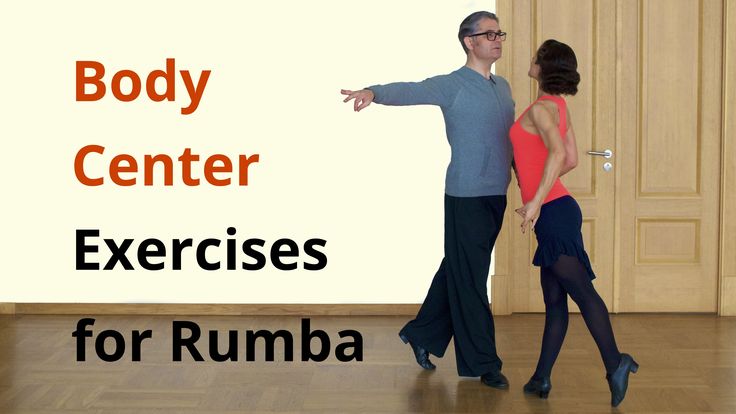
Toronto Dance Salsa - The Different Styles Of Salsa
Colombian Style Salsa (Cumbia)
Colombian style salsa began in Colombia and is danced to a different type of salsa music called “Cumbia” which is similar to the salsa rhythm but has a longer pause between the first three and the last three beats. It is rare to find a Cumbia instructional class as most people who dance this style were taught by family and friends. The style is still quite popular in South/Latin America and can be distinguished by a circular style of open/side breaks with a tap on the pauses of 4 and 8. Feet never move forward and backwards as in the Mambo step. Instead, the movement is a series of back to centre or side to centre footsteps. The style has very little turn patterns and is generally not a fast or “showy” style. Instead most Cumbia dancers will hold their partner very close with their entire bodies touching from head to toe. If turns are involved, they are generally very simple rock step left turns.
Cuban Style Salsa
Cuban salsa style is most similar to the original form of salsa rooted in Cuba . It is characterized by Afro Cuban style body movement which includes body isolation and hip movement. Cuban style salsa does not have many fast spins. Instead the movement is very circular as opposed to linear and partners tend to travel around each other. The hip movement is more noticeable in this style and stems from the pumping of the knees. The footwork is quite simple – the complexity lies in the arm work which requires the follower to have limber, flexible arms. Cuban style salsa is considered “male dominated” in the sense that the leader tends to be more showy and will create a greater push/pull feel for the follower then many other styles. Most Cuban style dancers tap on the pauses which are on the 4 th and 8 th beats if the dancers dance on 1. However, Cuban style salsa dancers do not always stay on the 1 beat and tend to stray depending on where the music takes them.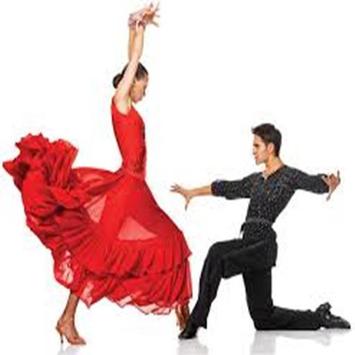
Miami Style Salsa (Classico Cubano, Casino)
Miami style salsa evolved from the Cuban style of salsa but is a more difficult and technically advanced style of Cuban salsa. Advanced Miami salsa moves tend to be intricate and pretzel-like and require a flexible follower to execute the moves. Many of the Miami moves are the same as Casino Rueda moves and the style is still more circular than linear. Open breaks or the Guapea basic (leader and follower break back and then push off eachother) with a tap are the most common basic steps in Miami style salsa. Cross body lead variations are common but are executed in a more circular fashion.
Casino Rueda Style Salsa (Rueda de Casino, Salsa Rueda)
Casino Rueda (meaning salsa wheel) is a group dance which originated in Havana , Cuba in the 1960s by a group called Guaracheros de Regla. In this dance, couples dance in a circle while one dancer, designated as “The Caller”, provides hand signals or calls out the moves which will be executed by every couple in the circle simultaneously. Many of the Casino moves involve swapping or switching partners which makes the dance tricky to execute and spectacular to watch. Rueda is very popular in Cuba and Miami and has gained popularity all over the world. Cuban Rueda tends to be more playful with easy-to-follow fun moves while Miami Rueda has many complicated turn patterns and requires memorization and skill to execute. Many callers will know anywhere from 150-300 moves so memory, speed and accuracy is a key to ensuring the circle is not broken. The advantage of learning Casino Rueda is that all moves learned in the Rueda circle can be danced one on one with a partner adding to a dancer’s repertoire of moves.
Many of the Casino moves involve swapping or switching partners which makes the dance tricky to execute and spectacular to watch. Rueda is very popular in Cuba and Miami and has gained popularity all over the world. Cuban Rueda tends to be more playful with easy-to-follow fun moves while Miami Rueda has many complicated turn patterns and requires memorization and skill to execute. Many callers will know anywhere from 150-300 moves so memory, speed and accuracy is a key to ensuring the circle is not broken. The advantage of learning Casino Rueda is that all moves learned in the Rueda circle can be danced one on one with a partner adding to a dancer’s repertoire of moves.
L.A. Style Salsa (Dancing “On 1”)
L.A. style salsa, usually danced “On 1”, is a flashier version of New York style salsa moves. Dancers use lots of dips, flips, drops and tricks which make for a great show to watch. The back and forth Mambo basic, again in a linear motion, is utilized with the leader breaking forward on 1.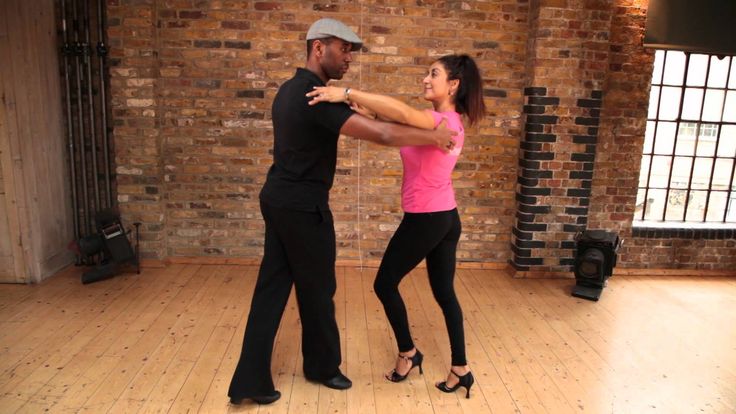 Because the dominating beat is the 1 beat which is the most accented beat in the series, the dancing looks and feels powerful and fast. L.A. style salsa has incorporated many other types of dancing including jazz, hip hop, and ballroom which is challenging for the dancers and entertaining for the viewers. Similar to the New York style salsa, many of the moves are created from cross-body lead variations. Shines are an important component of this type of salsa with complicated, speedy footwork and jazzy moves.
Because the dominating beat is the 1 beat which is the most accented beat in the series, the dancing looks and feels powerful and fast. L.A. style salsa has incorporated many other types of dancing including jazz, hip hop, and ballroom which is challenging for the dancers and entertaining for the viewers. Similar to the New York style salsa, many of the moves are created from cross-body lead variations. Shines are an important component of this type of salsa with complicated, speedy footwork and jazzy moves.
New York Style Salsa (Dancing “On 2”, Mambo Salsa, Eddie Torres Style)
Salsa on 2, commonly referred to as “Mambo”, is a style of salsa first introduced by Eddie Torres in New York in the 1960s. Technically speaking, dancing “On 2” refers to the beat the dancers break forward on. Followers will break forward with the left foot on the 2 and leaders will break forward on the 6. New York style salsa is distinguished by smooth, controlled, highly technical movements that are elegant, graceful, flow well and are not rushed.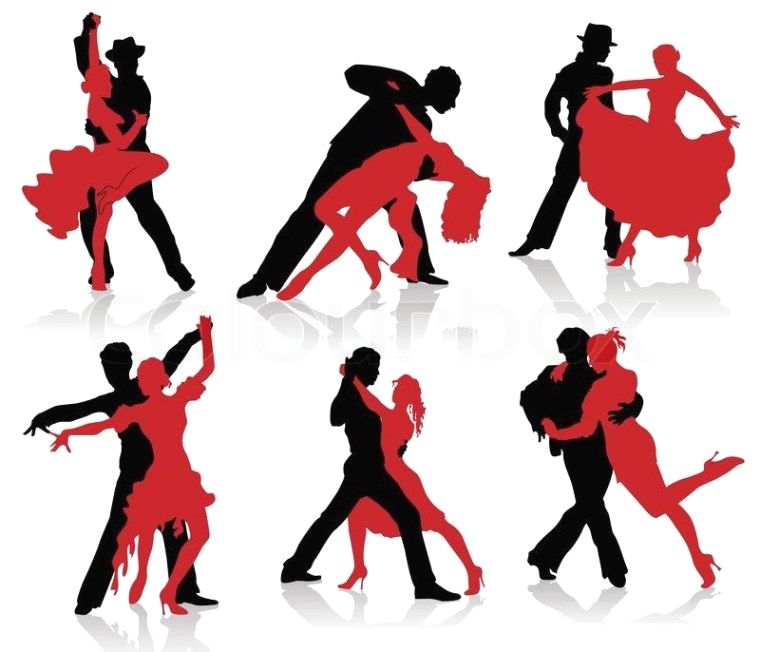 The style is very linear and many of the turn patterns evolve from cross body lead variations. Multiple spins, complicated footwork, Afro Cuban body movement and shines are a must. Dancing “On 2” is rhythmically more difficult as it is easier to hear the 1 beat and break on this beat. Many dancers learn to dance “On 1” first and then train “On 2” as they feel it is more musically and rhythmically rich and complex.
The style is very linear and many of the turn patterns evolve from cross body lead variations. Multiple spins, complicated footwork, Afro Cuban body movement and shines are a must. Dancing “On 2” is rhythmically more difficult as it is easier to hear the 1 beat and break on this beat. Many dancers learn to dance “On 1” first and then train “On 2” as they feel it is more musically and rhythmically rich and complex.
Puerto Rican Style Salsa
Puerto Rican style salsa can be danced “On 1” or “On 2”. If you are dancing Puerto Rican style “On 2” dancing, it is opposite from New York style in the sense that the leader breaks forward on 2 instead of the follower (can be called “On 6”). Some say that shines originated in Puerto Rico as these dancers would break away from their partners and execute extremely fast and complicated solo footwork. The lines are very clean and there is a great deal of shoulder shimmies incorporated into the dancing. There is an emphasis on dancing to the “Clave” especially the 2/3 clave (pa-pa, pa-pa-pa).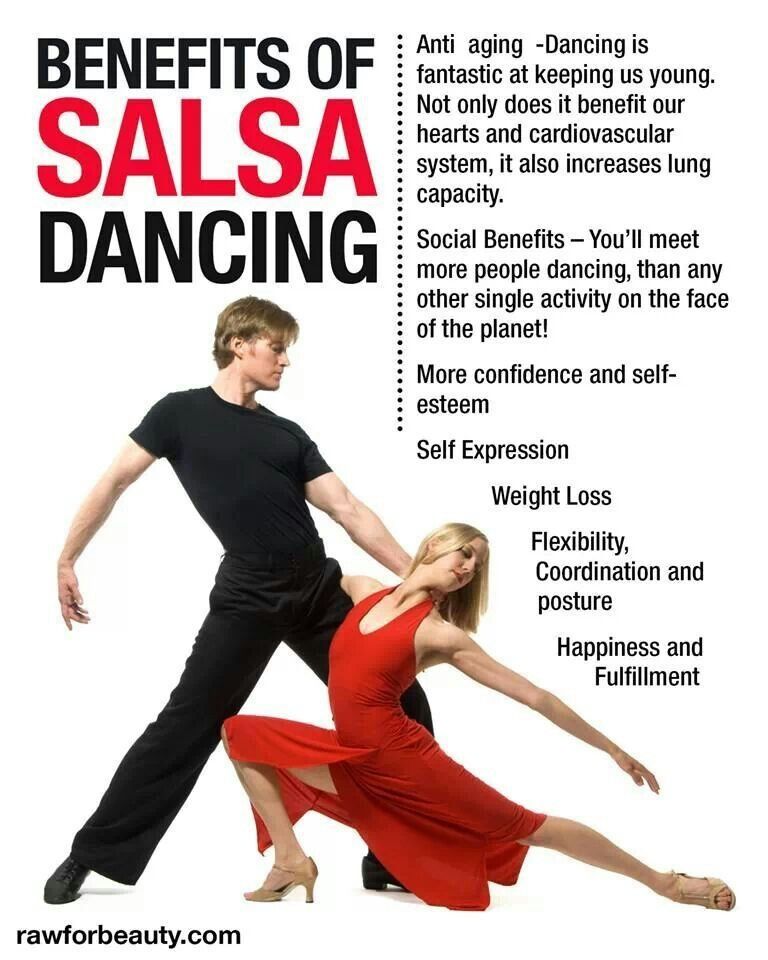 In fact Felipe Polanco, one of the pioneers of Puerto Rican salsa, has created a unique basic that complements the uneven 5 beat dance which incorporates a sliding forward and back motion that hits the accents of the clave.
In fact Felipe Polanco, one of the pioneers of Puerto Rican salsa, has created a unique basic that complements the uneven 5 beat dance which incorporates a sliding forward and back motion that hits the accents of the clave.
Salsa Shines
Shines refer to solo work when the leader breaks away from the follower and each dancer has the opportunity to freestyle on their own to the rhythm and accents of the salsa music. Shines involve more complex footwork as well as body movement and arm work. Shines are common in the New York , L.A. and Puerto Rican styles of dancing. They are not as common in the Cuban, Miami and Colombia styles of dancing. The term “shines” originally referred to having the opportunity to “shine” independently. Shines give dancers an opportunity to take a break from partner work and turn patterns and freestyle. There are many common shines such as Suzy Qs and flares but every dancer has their own unique and individual movements which allows dancers to be constantly challenged.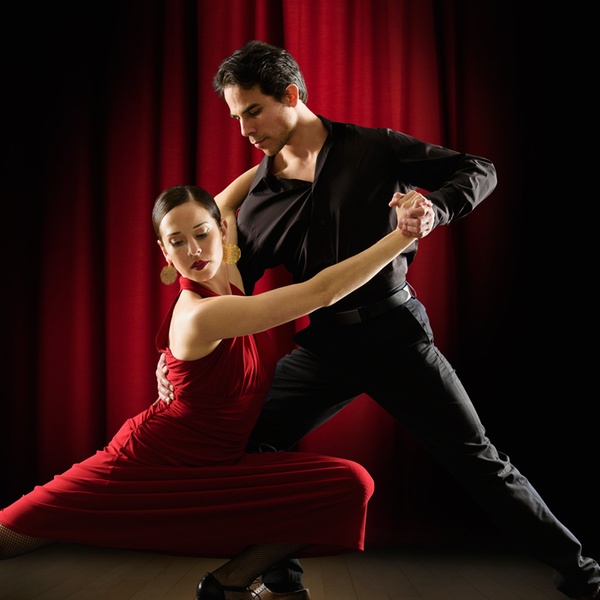
Salsa Styling
Incorporating styling techniques into any style of salsa has become very common. For both men and women shines, leg work, arm work, body movement, spins, body isolations, shoulder shimmies and rolls, and even hand styling have become a huge trend in the salsa scene. There are lessons dedicated to the art of salsa stylin’. Hip hop, jazz, flamenco, belly dancing, ballroom, breakdancing/pop and lock, and Afro Cuban styles have all been infused into the art of styling.
The main types of salsa: description and video
The variety of types and styles of salsa confirms that this is one of the most popular dances in the world. We talked in detail about the origin of salsa here. And in this article we will briefly describe the main varieties of salsa and illustrate them with our videos.
It must be remembered that originally salsa is a generalized name for Latin American dance music. Therefore, the styles of salsa as a dance are different techniques, that is, the ways in which the dancer interacts with the music.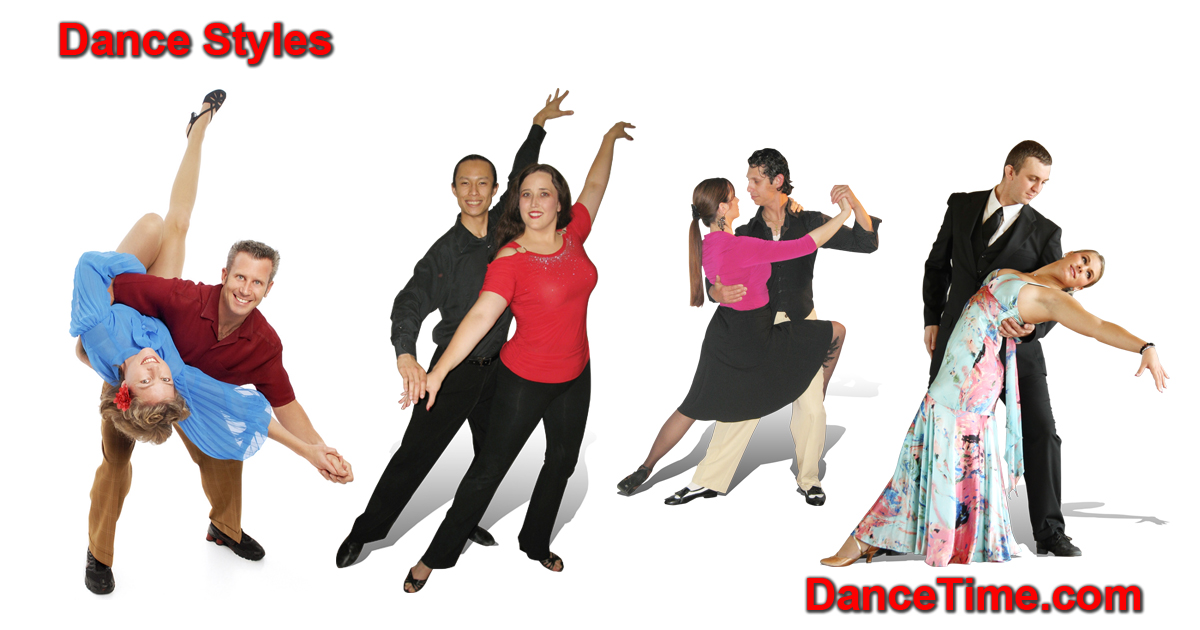 At the same time, it is important to know that dance is not a strict set of correct movements to conditionally correct music. Music gives the dancer a sense of rhythm, but he chooses the dance technique (style) based on his arsenal, the feeling of music, and the capabilities of his partner.
At the same time, it is important to know that dance is not a strict set of correct movements to conditionally correct music. Music gives the dancer a sense of rhythm, but he chooses the dance technique (style) based on his arsenal, the feeling of music, and the capabilities of his partner.
Many people divide salsa into two types: linear and circular. But this is not quite the right approach. In order to thoroughly understand this issue, you need to know the history of the origin and development of salsa.
The modern division of salsa into two types (linear and circular) is very arbitrary, since linear figures came from latin hustle to salsa only in the 1990s. At this time, salsa was often danced in an expanded form (linear) only for entertainment and ease of learning. Although New York social salsa is not necessarily danced in a line, it is often referred to as a line dance. The thing is that in those days the dancers deployed the dance in a line, used wide movements, numerous rotations.
This salsa is characterized by improvisation, when partners can dance independently of each other.
Another form of Cuban social dance, the Rueda de Casino, refers to a circular form of salsa. So it was danced by young people in Cuba, in the "Sports Casino of Havana" in the 1950s and 1960s: the dancers move in a circle, changing partners according to the announced commands. Although there is also improvisation in this type of dance, partners rarely go solo, preferring to dance the figures in pairs, as in the Cuban salsa Casino. Cubans have taken elements of various dances of the past and present, such as jazz, waltz, rock and roll, etc., and rethought them in their own unique manner, with humor and ease.
Marat Kapranov, chief editor of the project "Salsa in Russian"
Salsa Los Angeles
Salsa of this type was invented by the Vasquez brothers (Luis, Johnny, Francisco) in the city of Los Angeles (California) in the 90s. The main step is danced to the count of "1". The main differences of LA salsa are the clarity of movements, dynamics, the presence of acrobatic stunts, various supports and improvisations. There are practically no solo parts in LA salsa, but there are many elements of male and female styles.
The main differences of LA salsa are the clarity of movements, dynamics, the presence of acrobatic stunts, various supports and improvisations. There are practically no solo parts in LA salsa, but there are many elements of male and female styles.
Salsa New York
This type of salsa was invented by Eddie Torres. The original name was Modern Mambo. Salsa music is based on the traditional Cuban dream. Eddie combined the Cuban rhythm with steps: accents in the percussion part with a change of direction in the basic step. Modern salsa (mambo) is danced to the count of "2" and is a dynamic dance with an elegant and soft lead, short figures and numerous solos. By the end of the 1980s, restrictions in US-Cuban relations began to ease. Cultural exchange brought elements of the Cuban salsa Casino and some of the folklore dances of Cuba to mambo on 2. Salsa NY has a variety of breaks and musical passages that the dancers skillfully beat. In the dance of this direction there are numerous footworks and a special plasticity inherent in Latin American dances, which attracts new dancers all over the world.
In the dance of this direction there are numerous footworks and a special plasticity inherent in Latin American dances, which attracts new dancers all over the world.
Salsa Casino
This is the most varied, rhythmically diverse and musical type of salsa. The first figure of salsa Casino was invented in 1957 and danced to orchestral music in various clubs in Havana. Modern Cuban salsa (Casino) is performed, as a rule, to timba music, it is danced with a special Cuban plastique taken from rumba and Afro-Cuban local traditions. This type of salsa combines various circular and linear components, penetrations and complex, dexterous turns. The basic step begins on the count of "1", although it is often danced to any downbeat in the music, depending on the preparedness of the partner. This style is distinguished by a variety of complex figures (knots) that partners perform with their hands, as well as constant changes in location in a pair. Salsa Casino is performed at a medium and fast pace, a person can master it even without special physical training - although, of course, it will be a good help for dancing during long and hot parties.
Salsa Casino is performed at a medium and fast pace, a person can master it even without special physical training - although, of course, it will be a good help for dancing during long and hot parties.
Salsa Rueda de Casino
This style of salsa is such a popular style that it should definitely be mentioned on our list. This group dance originated and developed in Cuba and is the original form of Cuban salsa. The Rueda de Casino style, being incredibly popular in Cuba, accelerated the development of the Casino double salsa. It is danced by several couples at the same time, performing figures and changing partners, thanks to which during the party you can get to know all the dancers in one song! Today, unique flash mobs are held in the world (including Russia), when hundreds and even thousands of couples dance Rueda at the same time!
Now you are familiar with the basic types of salsa and you can choose the style you like. And you will find some important tips on how to learn how to dance salsa from scratch in this article.
Share:
Types of salsa
Salsa is so different
In a general sense, any Cuban music is called, and in a narrow sense, salsa is a style of dance and music of the 60s of the last century, which was invented by Cuban and Puerto Rican immigrants in America.
The basis of salsa is the Cuban dream. Spanish Son is translated as "sound", "rumour". In this new music, which appeared in the east of the island of Cuba, Spanish lyricism harmoniously intertwined with the music of Africa. It became an expression of patriotism in the ongoing war of Cuba against the protectorate of Spain. The dance is paired, but if the “montuno dream” is a slow dance, then the “guaracha dream” has a fairly fast pace.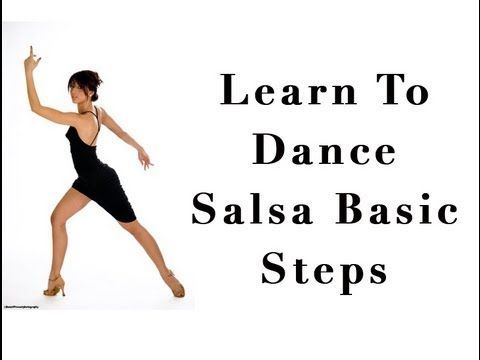 The main salsa trends are linear salsa - New York salsa, Puerto Rico salsa and Los Angeles salsa, and circular salsa - Casino, Colombian and Dominican.
The main salsa trends are linear salsa - New York salsa, Puerto Rico salsa and Los Angeles salsa, and circular salsa - Casino, Colombian and Dominican.
Salsa Casino
It is based on traditional Cuban music and dances of son and guaracha with a basic step that starts on any beat and keeps the rhythm. Partners move in a circle, the center of which is between them. This dance is characterized by complex hand movements - knots, and leading without impulses. The hands of the partners are almost always connected, and there are almost no female movements with the hands in the dance. Musical improvisation is encouraged. When dancing, they often lightly hit the floor with a toe or heel (the movement is called "tep").
Dominican or Venezuelan salsa
A fast dance with a basic step to any beat that can change several times in one dance. This is a circular salsa centered between partners with fast music and "impulse" dribble.
Colombian salsa
This dance does not have rigid geometry, it can be both circular and linear, similar to the Dominican basic step, starting from any beat that changes throughout the dance. Characteristic is the use of acrobatic elements in this type of salsa with a fairly large amount of "footwork" and a fast pace of music.
Salsa LA (Los Angeles)
This style was founded in Los Angeles at the end of the last century. It was founded by Luis Vazquez with brothers Johnny and Francisco and Djibi Vazquez.
This dance is linear, at a fast and dynamic pace, there are few solo improvisations, but there are many fast combinations. The basic step starts with a count of 1 on the strongest beat of the music. When performing a dance, partners must perform all movements clearly and quickly. Acrobatic elements are designed to emphasize the skill of the dancers.
Salsa NY (New York)
The creator of this dance is Eddie Torres, who took the Cuban dream as the basis, and calls his dance "Modernmambo".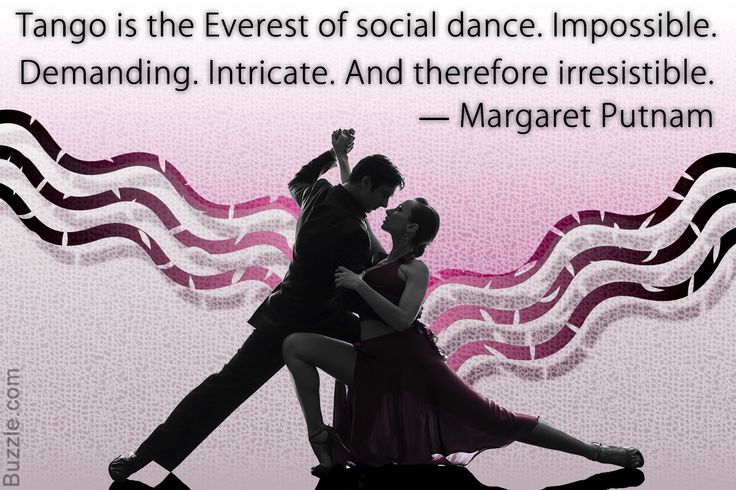 The basic step in it begins with a count of 2 for a weak beat, which the partners take back, while the partner steps forward. This dance shows all the beauty of the partner, who defiles around the partner. This is a linear salsa at a fast and dynamic pace, however, at the same time, the partner will leave quite gently. There are very few acrobatic elements, but solo compositions and pauses are welcome. The dance style is soft, “cat-like”.
The basic step in it begins with a count of 2 for a weak beat, which the partners take back, while the partner steps forward. This dance shows all the beauty of the partner, who defiles around the partner. This is a linear salsa at a fast and dynamic pace, however, at the same time, the partner will leave quite gently. There are very few acrobatic elements, but solo compositions and pauses are welcome. The dance style is soft, “cat-like”.
Puerto Rican Salsa
This national dance is distinguished by the fact that women in it take a step back in 2 counts, as a result of which its figures and style of lead are different from other types of dance.
Rueda de Casino
Somewhat away from these dances. This is a group circular pack with the participation of several couples. Simultaneous synchronous execution of figures is characteristic, while the command is given either by the leader or the comandante - the singer. According to the style of performance, this dance is similar to a round dance with a frequent change of partners. The figures of this dance are based on knots, the partners' hands open only when there is a change of pairs. The exit from the figures is very clear.
According to the style of performance, this dance is similar to a round dance with a frequent change of partners. The figures of this dance are based on knots, the partners' hands open only when there is a change of pairs. The exit from the figures is very clear.
In this dance, the partners walk in a circle from partner to partner, while they improvise in accordance with the music. Today in Cuba they dance a new Rueda de Casino , in which the circle can transform into a line, break into several adjacent circles or with a large circle in which a smaller circle is formed. In this dance, it is customary to perform dua-elements, which two couples usually dance outside the circle, returning to it at the end of them. Elements of acrobatics also find application.
In this dance, partners often change, several times for one figure. In competitions, the dance as a whole is scored, not individual dancers.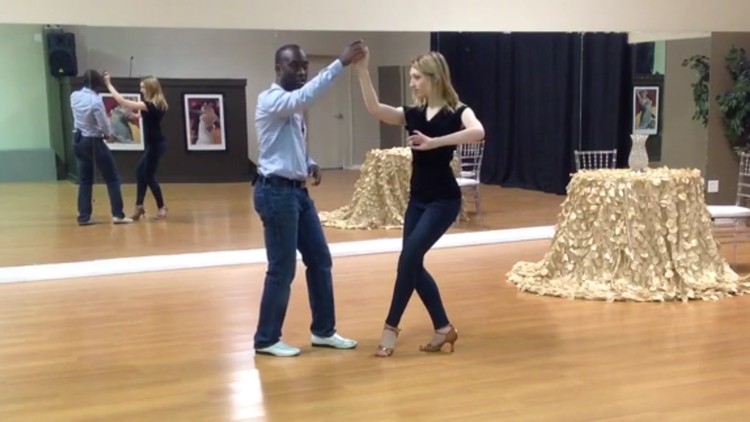 And since his drawing can only be viewed from above, you need to watch him "from above" so that all changes are clearly visible.
And since his drawing can only be viewed from above, you need to watch him "from above" so that all changes are clearly visible.
In addition to salsa itself, merengue, bachata, rumba and reggaeton are also popular in dance clubs. So the dances are intriguingly named - beautiful, sensual, filled with emotions.
Bachata (bachata)
At the beginning of the last century, this name was given to the gatherings of the poor. Their parties with vulgar music and dancing reflected the problems of the poor class, unrequited love and other troubles. Because of this, bachata was called "bitter music" and was performed only by alternative musicians singing these sad songs for emotional release.
However, the 80s were marked by the increased popularity of bachata, despite all its melancholy and melancholy. In addition, the dance had a simple choreography, easy to perform. The partners, dancing almost close to each other, took either four steps to the side, or forward or backward, while the last step was accentuated.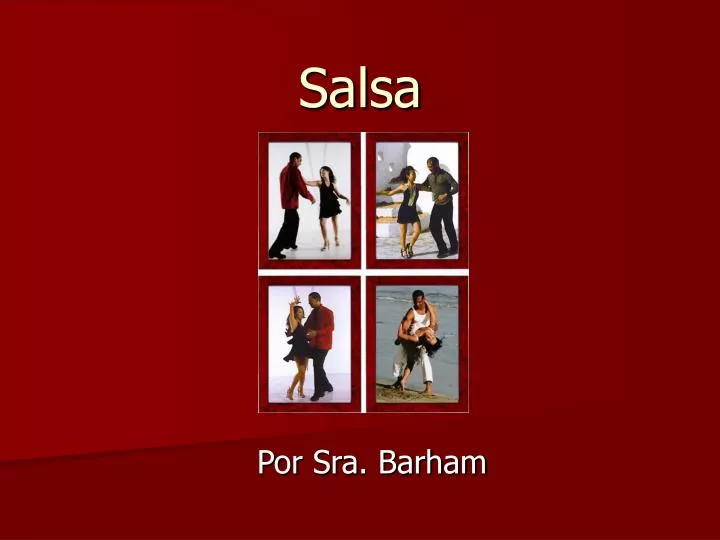 There are very few turns in this dance with frequent use of side passages.
There are very few turns in this dance with frequent use of side passages.
The most popular bachata players were Monchy&Akexandra and Aventura.
Merengue
Who initiated this music is still unclear. Some claim that Juan Baptista Alfonseca, a composer from the Dominican Republic, who composed and performed this music. The second argue that this melody sounded after the victory of the Dominican troops over the army of Haiti. Still others consider merengue to be a descendant of the Cuban dance "Upa Habanera", since one of its movements was called "merengue", which is probably the closest to the truth.
In the original dance, there are many decorations and figures, the dancers rotate their bodies, shoulders and hips at a fast pace. The modern version of the merengue is simple, and you can dance it even without preparation. It is based on turns performed to groovy music. Yes, and it does not require much space.
According to the legend, it was started by a sailor without one leg. He simply stepped from his good leg onto the piece of wood, limping slightly. Therefore, in merengue, the basic step - the pressing movements of the legs are of a “pressing” nature, and it is customary to limp on the right leg on counts 1 and counts 5 (the sailor had no right leg).
He simply stepped from his good leg onto the piece of wood, limping slightly. Therefore, in merengue, the basic step - the pressing movements of the legs are of a “pressing” nature, and it is customary to limp on the right leg on counts 1 and counts 5 (the sailor had no right leg).
Reggaeton
This music was brought from Jamaican immigrants to build the Panama Canal. So reggaeton acquired international features. In it, along with reggae, Puerto Rican drums and raggamuffin from Panama sounded.
Latin Americans living in the USA got to know reggaeton in the 1990s and embraced the new direction with enthusiasm, because it sounded like Latin American rhythms. Reggaeton and North American hip hop share a clear rhythm and rap singsong, usually in Spanish or a mixture of Spanish and English. This music was used in the movie Dirty Dancing.
Emotional rumba
It's called the "dance of love" for a reason. Two cultures intertwined in it - Spanish and African.



